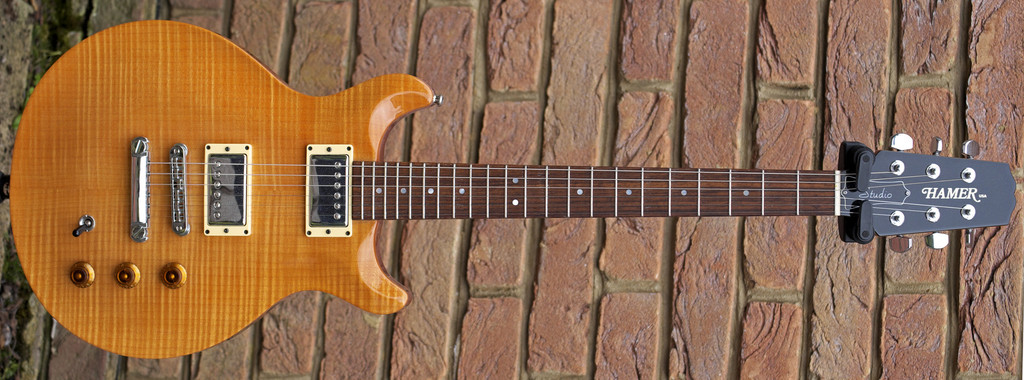I wasn't planning to get another kit, especially as I have two on the go and my previous two still in the wings waiting for better weather. But a combination of a good friend wanting me to build him a guitar and Adam offering me a really great offer on a GPR-1B (one of the kits that got removed as there was a big mismatch between the electronics supplied and the body control holes), saw me sign-up for one more kit.
So this is it, newly arrived and with the body having been wetted with turps:
No obvious glue spots apart from a white line where the veneers meet. I've already had a go with some glue remover on this and will have a couple more goes once my old electric toothbrush is recharged (easier than brushing the join manually!).
This is definitely the worse condition kit I've yet received. Nothing unsalvageable, just more work to put right.
There's a bit of a mess in the veneer/binding interface in the bottom cutaway:
Hopefully this can be made good with some maple-coloured grain filler.
The binding in general is quite rough and has a lot of machining marks on it, which will have to be rubbed down smooth. Even the F-hole binding is rough, and I've never had that on the three existing kits I've got with F-holes. Still, its only a bit of scraping and sanding.
I was less happy with this dent in the side:
But my first ever go at steaming out a dent worked well (first use of my dedicated for luthiery $15 iron from Amazon) and now you'd never know it was ever there.
Apart from a bit of raised grain (and the body needs sanding anyway) it's now fine.
There's a bit of work that needs doing on the headstock as there's a gouge out of the top on one side of the truss rod dip where the nut meets the headstock. Not quite sure yet what I plan to do with the headstock, so it can wait. But it's going to stop me leaving the headstock with a natural finish. My friend wanted a natural finish for the guitar so it's going to be quite similar to my USA Hamer Studio (which is actually a bit paler than in the photo):
But I'm tempted to do some light popping. I need to discuss this with him.







 Reply With Quote
Reply With Quote




